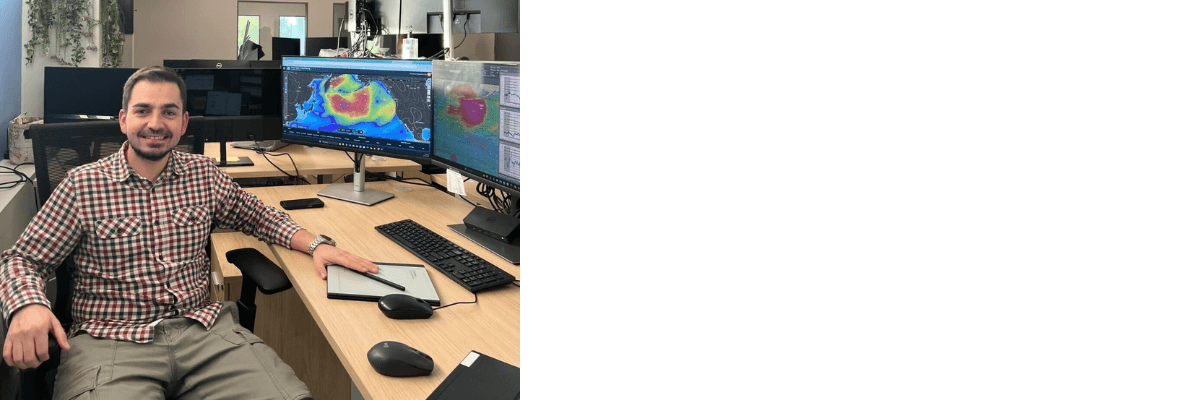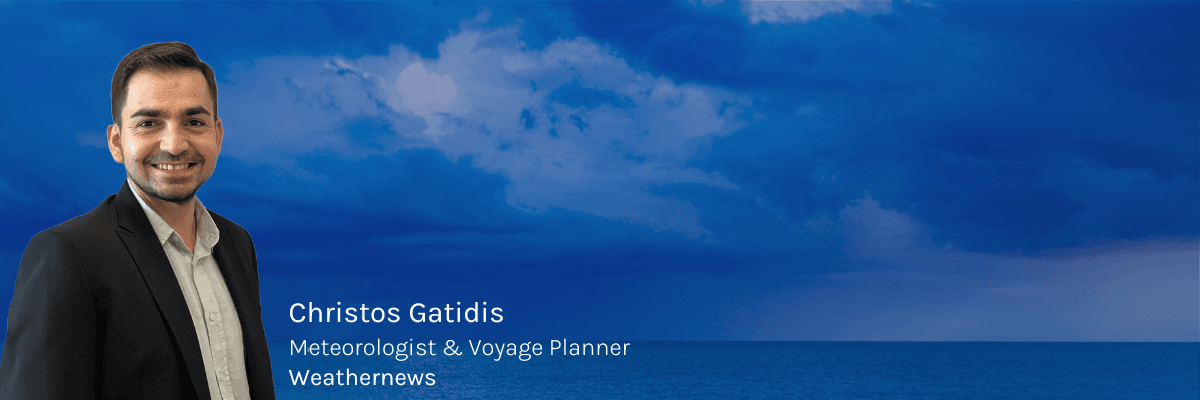Voyage Planning: A Perfect Match of High-Tech and Human Savvy
The Journey to Voyage Planning Expertise
Gatidis’ inspiration to pursue a career in voyage planning began with his academic background, starting with a BSc in mathematics, followed by a master’s and PhD in meteorology. "I was always fascinated by the fact that, by understanding how the atmosphere behaves, I could make a correct weather forecast that could not only be helpful to individuals but also protect lives," he says.
The shipping industry was uncharted territory for him initially. "What I find particularly rewarding is contributing to decarbonization in shipping by finding optimal routes for every voyage, helping reduce emissions while ensuring efficiency. Decarbonization will only come through the sum contribution of lots of people," he adds.

Making the Data Work
A typical day for Gatidis involves receiving weather prediction data from multiple sources to build a comprehensive weather story. "We check the latest communication from the vessel and operator, then optimize the route based on that forecast data," he explains.
AI in shipping plays a crucial role, integrating weather routing data from multiple forecasting sources. These tools analyze vessel performance under various conditions, offering decision-support systems that efficiently evaluate alternative routes for safe and cost-effective maritime operations.
Gatidis communicates with masters and shore offices primarily through email and phone calls. "Not surprisingly, the most common questions we get are about weather conditions expected in the next few days. Unpredictable weather like bombing low-pressure systems and tropical cyclones are typical challenges a vessel may face – and we have developed cutting-edge technology that accurately forecasts these systems on time."
The continuous nature of weather makes the handover between Weathernews’ global offices crucial for reliable weather routing 24/7. "We have specific rules and operational procedures that govern the route selection process. By following these standards, we deliver the same level of service regardless of who's on duty," says Gatidis.

Staying Agile in Dynamic Conditions
Keeping voyage plans updated as conditions evolve is one of Gatidis’ primary challenges. "To create a plan, you take into account different inputs such as the weather forecast, specific vessel characteristics and limitations, operational needs, navigational concerns, the master's intentions, operator requests, etc. Any of that can change at any time, potentially requiring a new routing strategy. You have to be on the ball the whole time."
Occasional disagreements between weather models can also pose difficulties. "In these scenarios, I use my experience to make it clear to the master or operator that there is higher uncertainty in the expected weather conditions. We work from there," he says.
Managing Stress and Making a Difference
Handling the stress of ensuring vessel safety is not always easy. "It requires a combination of expertise and teamwork to ensure confidence even at critical moments," Gatidis acknowledges. "Initially, we rely on detailed route analysis to minimize uncertainties. Then we collaborate with masters and operators to ease decision-making, making sure everyone's on the same page. However, at the end of the day, it's important to remember that our job is to assist with weather routing recommendations, not to tell the master what to do."
Positive feedback from vessel operators and masters serves as a key motivator. "A recent example was a container ship transiting the Pacific, where we informed the master in a timely manner of a rapidly developing low-pressure system. In continuous communication, we created a new voyage plan that positioned the vessel a safe distance away. It was a serious bit of weather, and he was very grateful for our support," he recalls.
Gatidis also emphasizes the critical role of intuition in situations where models may falter. "Just a few days ago, a specific weather model underestimated the weather conditions in the mid-Atlantic. Based on my experience, I disregarded that forecast and adjusted the conditions accordingly. Any AI/machine learning technology lacks this kind of critical thinking."
The Human-Machine Dynamic in Voyage Planning
Voyage planning involves decision-making, situational awareness, and experience-based judgment that digital tools cannot fully replicate. "Especially in marginal weather conditions, only humans can assess risks, balance competing priorities – for example, safety versus efficiency and/or cost savings – and make context-specific decisions," says Gatidis. "Humans also excel at interpreting ambiguous weather data beyond the scope of algorithms. Our expertise complements technology, ensuring robust and flexible decision-making."
This collaboration defines the importance of keeping humans in the loop. "It's a virtuous circle where humans provide experience-based insights while technology automates complex tasks, facilitating informed decision-making," he explains. Technology predicts and mitigates risks from unpredictable weather and sea conditions, aligning decisions with environmental and regulatory goals while maximizing operational savings. Humans interpret data contextually, validate AI-generated insights, and balance priorities like cost savings and safety.
Moreover, human adaptability is essential for handling unforeseen events. "We're also on hand in the event of a system failure to provide manual route advice if required," he adds.
Looking Ahead: The Future of Voyage Planning
Gatidis anticipates that advancements in AI, machine learning, and high-resolution weather models will significantly shape the future of voyage planning. "Every new tool will work to enhance precision and efficiency. For example, AI could potentially enable real-time adaptive routing in dynamic weather conditions, supporting optimal fuel efficiency and emission-reduction targets. Advanced analytics and machine learning models may also predict risks more accurately based on vessel-specific performance," he says.
However, he believes that environmental regulations, including the IMO's decarbonization targets, will be the most effective driver of progress.
Advice for Aspiring Voyage Planners
For those considering a similar career, Gatidis highlights the dynamic and rewarding nature of the role. "Weather forecasting is endlessly fascinating, and shipping adds another layer of complexity. You've got to be good at communicating under pressure and thinking out of the box. It's challenging but great for personal development!"
Reflecting on his journey, Gatidis says, "I'm proud to work at Weathernews, as we've been at the forefront of weather forecasting for global shipping for over 30 years – optimizing routing and risk analysis for more than a million voyages. I'm confident we'll maintain our market position by continuing to pioneer new technology while keeping humans on top of things, where we need to be."




